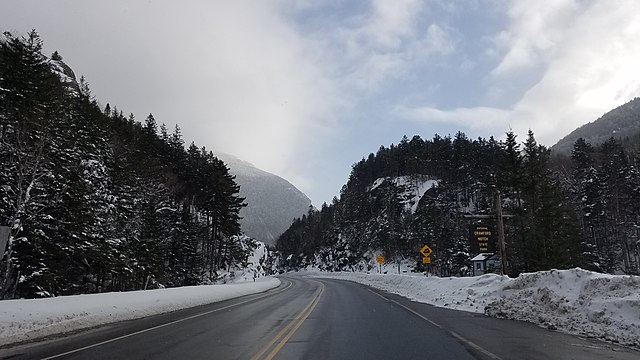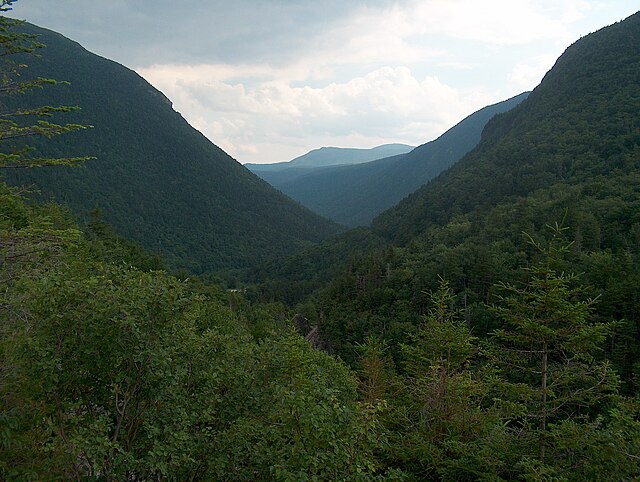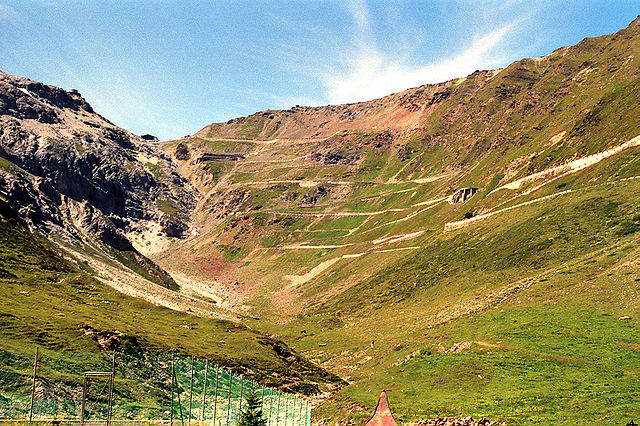Crawford Notch is a major pass through the White Mountains of New Hampshire, located in Hart's Location. Roughly half of that town is contained in Crawford Notch State Park. The high point of the notch, at approximately 1,900 feet (580 m) above sea level, is at the southern end of the town of Carroll, near the Crawford Depot train station and Saco Lake, the source of the Saco River, which flows southward through the steep-sided notch. North of the high point of the notch, Crawford Brook flows more gently northwest to the Ammonoosuc River, a tributary of the Connecticut River.
The Notch of the White Mountains (1839), by Thomas Cole (1801–1848), looking south past Saco Lake
The summit of Crawford Notch in January
Crawford Notch (1867), by Thomas Hill (1829–1908), looking north, collection of the New Hampshire Historical Society
Present-day Crawford Notch, looking south from Elephant Head rock (visible to left of notch in Thomas Cole painting)
A mountain pass is a navigable route through a mountain range or over a ridge. Since mountain ranges can present formidable barriers to travel, passes have played a key role in trade, war, and both human and animal migration throughout history. At lower elevations it may be called a hill pass. A mountain pass is typically formed between two volcanic peaks or created by erosion from water or wind.
Sani Pass in Mokhotlong, Lesotho
Idealised mountain pass represented as the green line; the saddle point is in red.
Col between Kensgriff and Yarlsidine in the Howgill Fells, England
Stelvio Pass in the Alps (Italy)








